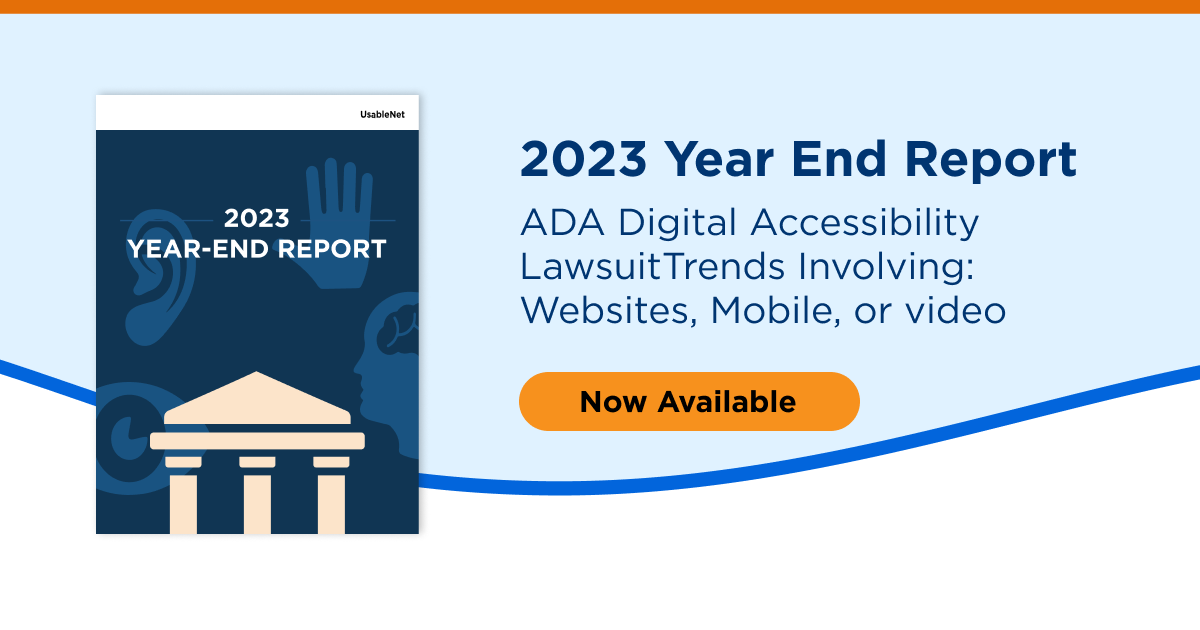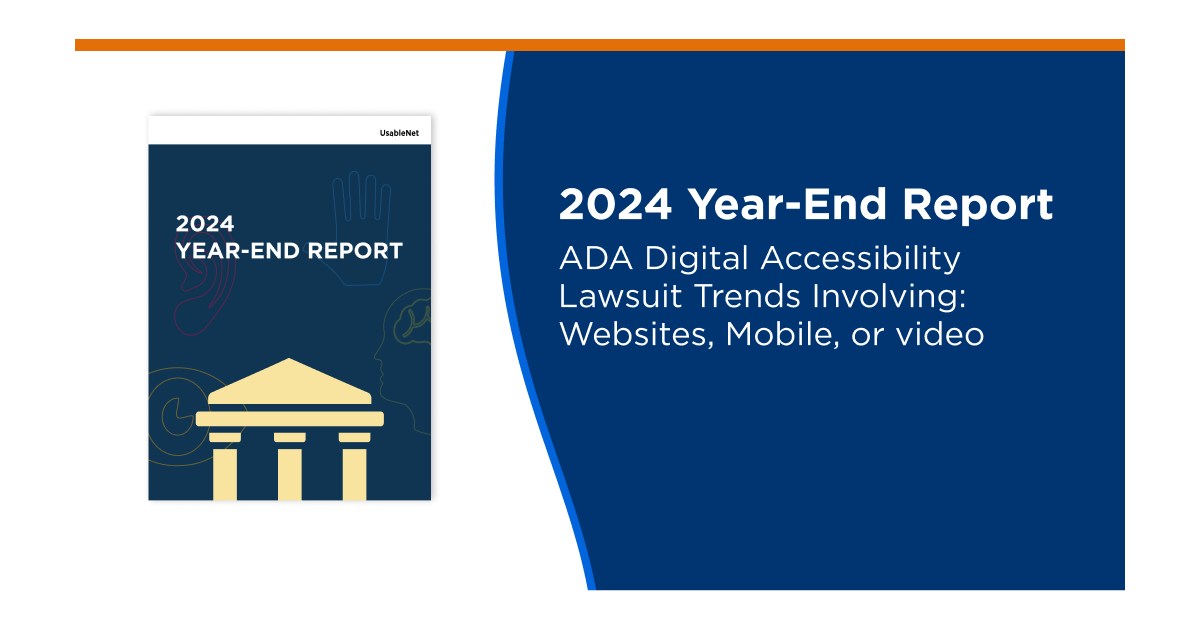Our team has tracked the numbers in the US digital accessibility lawsuit space throughout 2023.
Download the report for free here.
I’ve delved into the details with the help of our team. We have downloaded and read all the key lawsuits tracked the players, and the trends. In this blog, I aim to add some context to the numbers in the report.
We release our biannual accessibility lawsuit reports to help you understand the risk of digital accessibility lawsuits, advocate for app and web accessibility with your internal stakeholders, and plan your company’s digital accessibility initiatives.
Plaintiffs and advocates are winning key battles.
Plaintiffs filed over 4,500 federal and state-filed ADA-related digital lawsuits, around 500 more than in 2022.
After two decades of advocacy, those pushing for websites to fall under the ADA are achieving success. The DOJ recently declared that by 2024, all state and local websites must adhere to WCAG 2.1 AA standards. This action confirms that websites and mobile apps are as important a place for public accommodation as any physical location in the modern digital world.
This victory, alongside other state-updated legislation, may embolden advocates and plaintiffs to push for digital inclusion in all aspects of digital life.
Companies need to act more quickly.

This year, plaintiffs filed over 1,000 lawsuits against companies that had previously faced at least one lawsuit in the last three years.
The first lawsuit a company receives should evoke immediate action, an action to improve the accessibility of the listed digital property, and, just as significantly, action on all their digital properties.
The ADA does not protect a company with an inaccessible website, no matter how often, how recently they got sued, or even if they settled to remediate. Any new user who feels they have encountered a barrier to using a website can bring an action against the same website or any other websites or apps the company has. The numbers we track speak for themselves.
New York is way out in front.
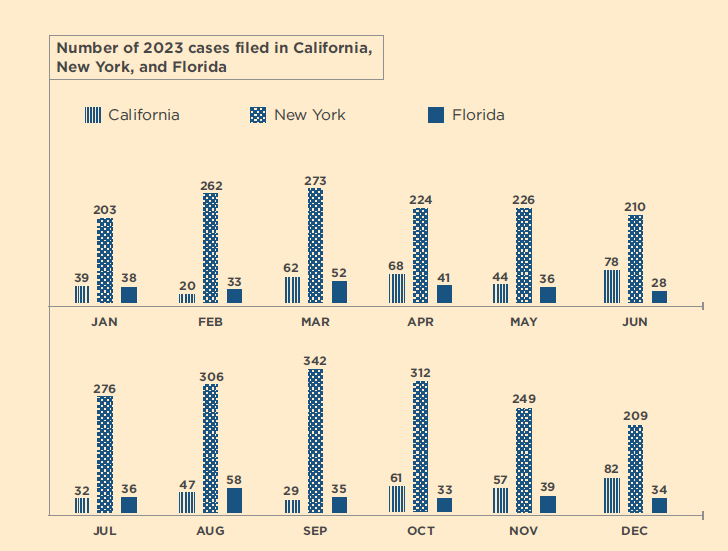
Plaintiff firms file almost 75% of all lawsuits in New York federal or state courts. Although we have seen increased lawsuits outside the prominent three regions of New York, California, and Florida, New York is king.
The combination of federal and state laws, the concentration of plaintiffs and plaintiffs’ firms, and the fact that New York judges have tended to be very plaintiff-friendly regarding the type of websites has created a powerful combination. (California mainly needs a connection to a physical space or nexus, but New York does not have this requirement.)
Don’t get excited if you are outside of New York. Any company doing business in New York via a website can have a claim brought there. That goes for California, Florida, and any other state. The internet has no boundaries.
E-commerce, big and small, beware.
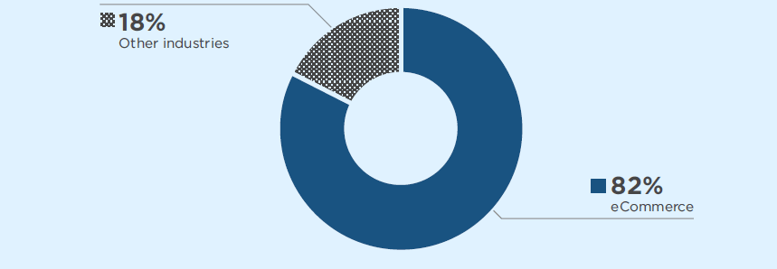
Many factors drive 80% of all lawsuits to claim that a retail or eCommerce experience causes harm due to accessibility barriers to a given user (worth noting that 99% of cases are brought by a visually impaired or blind individual using a screen reader). Here are my top three reasons.
- Establishing standing is straightforward: a plaintiff must demonstrate intent to use and harm due to lack of use. A judge may find it plausible that a user attempted to buy shoes or event tickets on 10 or 20 websites, encountered issues, and sued them all.
- Complicated sites: ECommerce websites are complex, change often, and are more likely to have issues not caught during fast and rapid digital updates.
- Many to target - plaintiffs suing hundreds of websites yearly need volume. E-commerce is the largest business area online, with nearly every type of business now selling products or services digitally.
Focused Plaintiff activity adapting to legal cases.
The above eCommerce focus allows me to finish talking about the business of ADA lawsuits.
The top ten plaintiffs’ firms represent around 25 plaintiffs but account for over 84% of all claims. So, the average leading plaintiff firm generates about 360 cases a year. There are not 4,500 individuals who have struggled with a website and have hired a lawyer to represent them.
Most of these cases settle, with the plaintiff typically gaining the right to have the website fixed and their legal fees covered. This trend has increased the number of plaintiff firms, as emphasized in the report.
Plaintiffs and plaintiff firms get favorable settlements for two combined reasons: the WCAG 2.1 AA standards are tough to achieve and maintain, and the vast majority of companies have yet to proactively try to follow these guidelines, leaving defense lawyers little ammunition to fight such claims. The best most companies can do is hire a well-informed industry defense firm that can help negotiate the best settlement and write the most achievable remediation agreement.
Adding a widget doesn't mean you won't get sued.
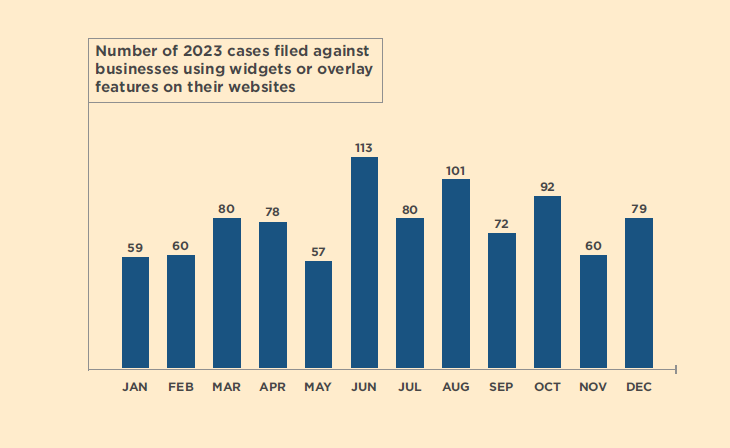
So, how should a company with a website protect itself against ADA web and app-related claims?
Most accessibility widget companies claim to solve all barriers and offer legal protection from ADA cases. Just search Google for web accessibility solutions, and you’ll find a dozen or so companies vying for your ad click.
We monitor whether a website had a widget installed on the day it faced ADA web violation lawsuits. Over 900 companies had already invested in widgets when they were sued this year.
So, what should you do?
Firstly, please notify all your suppliers and vendors of your digital experiences that they are responsible for ensuring accessibility. They are professionals; you are paying them. You can use that power to shift the burden to the correct place.
Secondly, do what plaintiffs and their firms do. Test your top pages with a quality free WCAG testing solution - we provide a free version to get started, get the resulting report of all the easy-to-find issues, and send it to your web team to remediate them.
Then, engage a user who relies on a screen reader and ask them to do the top things you expect all users to do. Share the results with your web team or vendor and resolve any issues. These two actions form the basis of all ADA claims, and by performing them and issuing action based on them, you will reduce your risk and increase the accessibility of your website.
A trusted partner can help you improve accessibility and reduce legal risk. Contact UsableNet for a free consultation with an accessibility expert.

